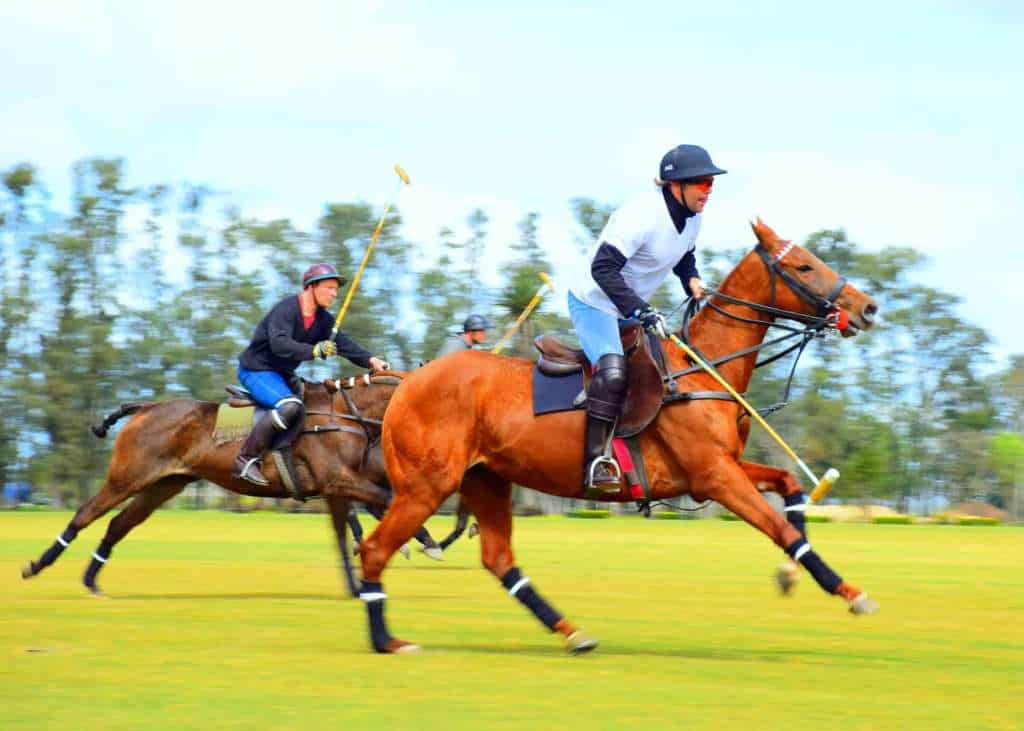Most of us associate polo with the luxury sport of English gentlemen. It owes its fame, among others, to the fact that it is held in high esteem by members of the British royal family: Prince Charles and Prince William. What is the game of polo?
Polo is simply a ball game played on horseback. The goal of players moving on horseback is to place the ball in the opponent’s goal using special sticks (called mallets).
This interesting game originates from Asian areas. In ancient Persia it was an element of training for military horse units, including the royal guard. On the continent it became popular already in the Middle Ages, and Asians used to call it Sagol Kangjei. So how come that it is so well known on the British Isles? Well, because of the British soldiers stationed in India in the 19th century. They were also responsible for giving the game its current name and for popularizing it on the European continent and the British Isles. The sport has gained such a huge fan base that for a time it was one of the Olympic disciplines; there are also regular World Polo Championships
Polo has become a favorite sport of the upper classes, with monarchs, nobility, and noble families enjoying the game. However, this does not mean that polo is a sport for everyone. Polo requires a lot of physical fitness, strength, concentration, and flawless control over the horse. All this, however, will not translate into success if the players forming the team are not sufficiently harmonious
Currently, besides Great Britain, the United States is also the country where polo triumphs. There are 18 countries in the world where the sport is practiced professionally and another several dozen where it is practiced amateurishly

The rules of polo are fairly simple, especially for fans of team sports. The main goal of the game is to drive a ball into an opponent’s goal using a long stick. The goal is 7.32 m wide, while the white ball resembles an orange in size. Two teams take part in the game, each of which consists of 4 players, each of whom rides a horse. Teams can be composed of both men and women, and there are also mixed groups. The numbering of the players is important in polo
Polo matches take place on a grass field with dimensions 275 × 183 m. Polo can also be played on a slightly smaller field (with dimensions of 100 × 50 m), in which case we are dealing with the so-called polo arena. This means that each team can have a maximum of 3 players
The match is divided into chukkers, or parts, of which there may be from 4 to 8, each lasting 7.5 minutes, while in the case of the polo arena – 6.5 minutes. There are 3-minute breaks between each part, which is the time allotted for changing horses (polo players usually need as many as 4 horses during a match). After each ball is knocked into the goal, the players switch halves
The game of polo is played using horses. However, not all are suitable for it. The mounts chosen for the game are the best of the best. They must be characterized by outstanding intelligence, but also great physical endurance, because polo requires from them a great effort. Therefore, the players usually have 4 horses prepared for the match, which they change during the regulation breaks. The necessity to have such a number of mounts has made polo a sport reserved for people of high wealth for centuries.
Photo: Mentatdgt/Pexels